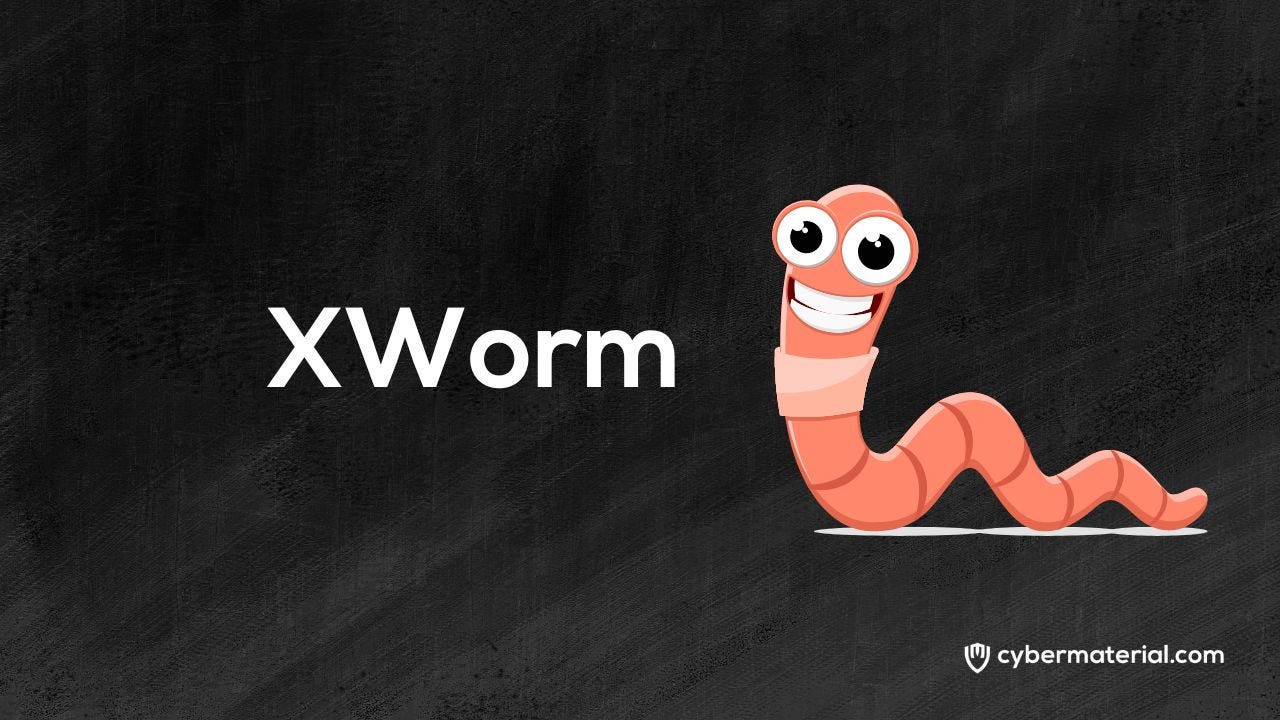
XWorm
Type of Malware
Worm, Remote Access Trojan
Country of Origin
Unknown
Date of initial activity
2022
Targeted Countries
Global
Associated Groups
NullBulge
Motivation
Financial Gain
Attack Vectors
Phishing
Targeted Systems
Windows
Overview
Xworm is a sophisticated piece of malware that has garnered attention within cybersecurity circles due to its intricate design and notable impact. First identified in the malware ecosystem in 2020, Xworm is a versatile Remote Access Trojan (RAT) known for its ability to facilitate unauthorized access and control over infected systems. It is designed to exfiltrate sensitive information, manipulate files, and execute commands remotely, making it a valuable tool for cybercriminals seeking to infiltrate and exploit various digital environments. The malware is distributed through multiple vectors, including phishing emails, malicious downloads, and compromised websites. Once installed on a victim’s machine, Xworm operates stealthily, utilizing advanced techniques to avoid detection by security software. Its capabilities extend beyond traditional RAT functionalities, incorporating features that enable it to capture keystrokes, take screenshots, and monitor network activity. This multifaceted approach allows Xworm to adapt to a wide range of targets and environments, from individual users to large organizational networks. Xworm’s design reflects a growing trend in the malware landscape towards modular and highly customizable threats. Its modular architecture enables attackers to tailor the malware’s capabilities according to specific objectives, enhancing its effectiveness and persistence. This adaptability makes Xworm a particularly dangerous threat, as it can be modified and repurposed to suit various attack scenarios, from data theft to system disruption.
Targets
Accommodation and Food Services.
How they operate
Xworm is a sophisticated piece of malware known for its capabilities in compromising systems, maintaining persistence, and exfiltrating sensitive data. This malware typically initiates its attack through phishing emails that contain malicious attachments or links. Once a user interacts with these attachments or links, the Xworm payload is executed on the victim’s system. The initial execution is often facilitated by leveraging vulnerabilities in user applications or operating systems, exploiting methods such as macro-enabled documents or malicious scripts embedded within the files. Upon execution, Xworm establishes persistence on the infected machine to ensure it remains operational even after system reboots. It achieves this by modifying registry keys or placing itself within startup folders, thus ensuring automatic execution during the system’s boot process. Additionally, Xworm may create scheduled tasks to further cement its persistence. The malware employs various obfuscation techniques to evade detection by security software, including code obfuscation and the use of encrypted communication channels to obscure its activity. Xworm’s operational capabilities extend to privilege escalation, where it attempts to exploit system vulnerabilities or misconfigurations to gain elevated privileges. This allows it to bypass security controls and gain deeper access to the system. Once privileged access is obtained, Xworm can perform credential dumping to harvest stored user credentials and potentially gain access to other networked systems. The malware also performs extensive reconnaissance and discovery activities. It scans the network for other vulnerable systems and services, enabling lateral movement across the network. Xworm may use protocols such as Remote Desktop Protocol (RDP) to facilitate this lateral movement. Its ability to scan and identify critical files and directories further enhances its capacity to collect valuable information. Data collection and exfiltration are central to Xworm’s functionality. It stages the collected data, organizing it before transmission to avoid detection and ensure efficient exfiltration. The malware uses various exfiltration techniques, including managing the size of data transfers to circumvent network monitoring systems. Additionally, Xworm can communicate with its command and control (C2) servers using remote access tools, facilitating further instructions and updates. In terms of impact, Xworm can also include capabilities to destroy or corrupt data on the infected systems. This final action is often a last resort to cover tracks or create additional disruption. The sophisticated nature of Xworm’s operations underscores the need for robust security measures and monitoring to defend against such advanced threats. Implementing comprehensive security solutions and maintaining vigilance are essential in mitigating the risks associated with Xworm and similar malware.
MITRE Tactics and Techniques
Initial Access: Phishing (T1566): Xworm is often delivered through phishing emails containing malicious attachments or links. Execution: User Execution (T1203): The malware may require the victim to execute a malicious file or macro to initiate its installation. Command and Scripting Interpreter (T1059): Xworm might use command-line interfaces or scripting languages to execute its payload. Persistence: Registry Run Keys/Startup Folder (T1547.001): The malware may create registry keys or place itself in startup folders to ensure it runs upon system reboot. Scheduled Task/Job (T1053): It could set up scheduled tasks to maintain persistence on the infected system. Privilege Escalation: Exploitation for Client Execution (T1203): Xworm might exploit vulnerabilities to escalate privileges on the compromised system. Defense Evasion: Obfuscated Files or Information (T1027): The malware may use various techniques to obfuscate its code or files to avoid detection. File and Directory Discovery (T1083): Xworm may perform scans to identify important files and directories to target. Credential Access: Credential Dumping (T1003): The malware could attempt to extract stored credentials from the infected system. Discovery: Network Service Scanning (T1046): Xworm may scan the network for other vulnerable systems or services. Lateral Movement: Remote Desktop Protocol (T1076): It could use RDP or similar protocols to move laterally within the network. Collection: Data Staged (T1074): The malware might stage collected data before exfiltration to avoid detection. Command and Control: Remote Access Tools (T1219): Xworm could use remote access tools to communicate with its command and control servers. Exfiltration: Data Transfer Size Limits (T1030): It may implement techniques to manage the volume of data being exfiltrated to avoid detection. Impact: Data Destruction (T1485): In some cases, Xworm might include capabilities to delete or corrupt data on the infected system. References
The post XWorm (Worm, Remote Access Trojan) – Malware first appeared on CyberMaterial.


